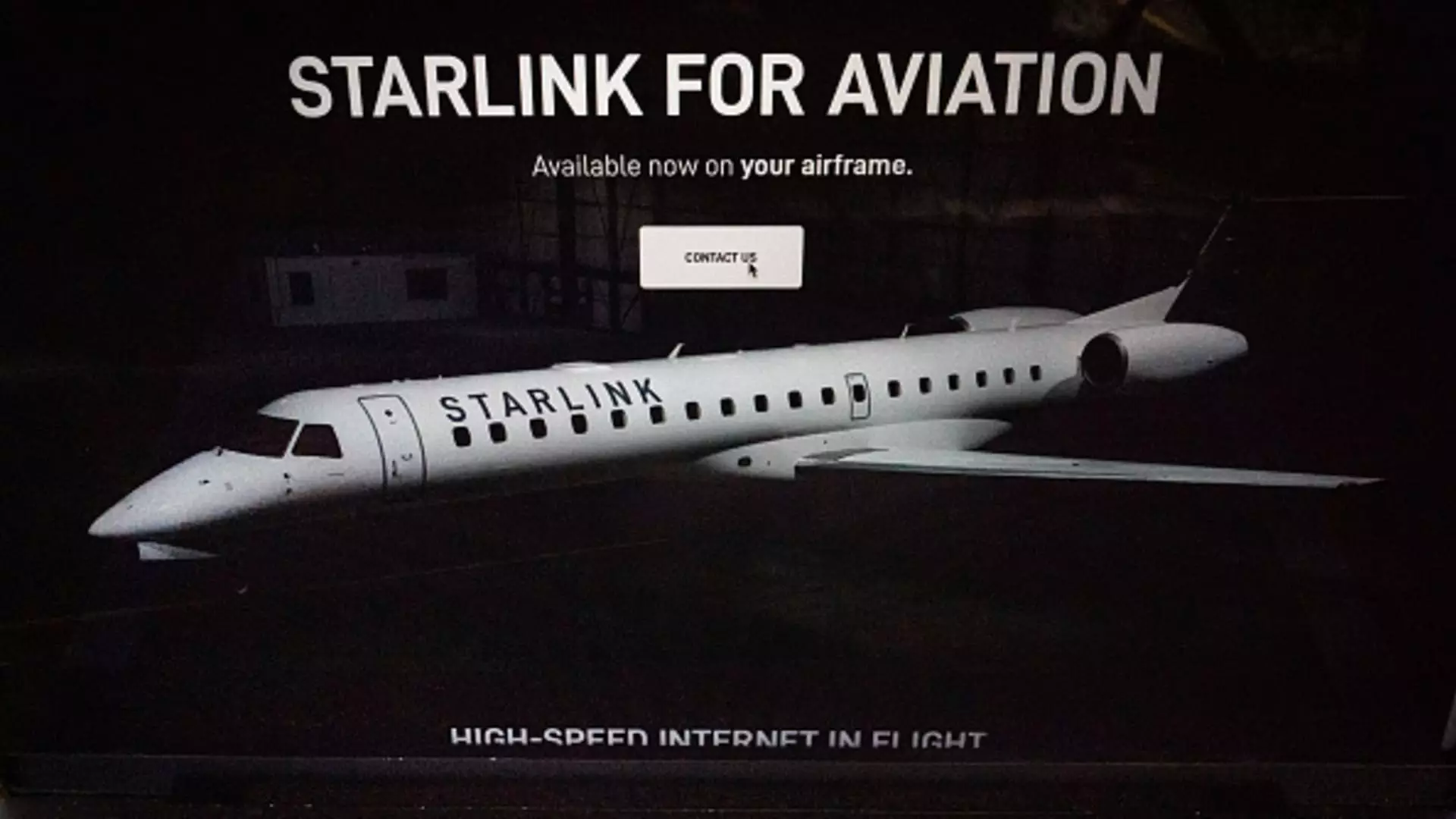The recent announcement of a major partnership between SpaceX’s Starlink and United Airlines marks a significant shift in the landscape of in-flight connectivity (IFC). With the intention of outfitting more than 1,000 aircraft with high-speed satellite internet, this deal underscores SpaceX’s ambition to dominate the aircraft connectivity market. The deal not only almost doubles SpaceX’s existing backlog of Starlink IFC orders but sets a new standard for passenger expectations when it comes to reliable and accessible in-flight Wi-Fi.
As Nick Galano, SpaceX’s Director of Starlink Aviation Sales and Partnerships, remarked during a panel discussion at the World Space Business Week conference in Paris, this partnership propels Starlink from “effectively a startup” to a formidable player in the aviation sector. With approximately 2,500 aircraft now under contract, the implications for both the airline industry and consumers are momentous, sparking interest and potential competition among established providers.
United Airlines’ decision to adopt Starlink for its fleet signals a significant disruption in the IFC market. By opting for Starlink, United is effectively sidelining four existing service providers: Viasat, Panasonic, Thales, and Gogo. This shift raises questions about the durability of legacy providers who have long dominated this sector. The pivotal nature of this contract can hardly be overstated, as it represents Starlink’s largest IFC agreement to date and highlights the growing demand for superior connectivity solutions in the aviation industry.
This increasing reliance on Starlink’s network is grounded in the impressive technological advancements SpaceX has made since launching the Starlink service in 2020. With over 6,400 satellites currently in orbit, the company is capable of connecting over 3 million users across 100 countries. The capacity available through Starlink is staggering—over 300 terabits per second, which is reported to be over 100 times what traditional systems offer. As SpaceX continues launching new satellites at an impressive rate of approximately one every three days, the capabilities of this growing constellation are set for even further expansion.
One of the critical hurdles facing airlines in the adoption of new satellite communication systems is the logistical nightmare of retrofitting existing planes. Traditionally, the installation process can take days, leading to considerable downtime and operational challenges for airlines. Solving this issue quickly has been one of SpaceX’s focal points. Galano emphasized the company’s commitment to innovation, aiming to reduce installation times to under a day—a goal that has reportedly been met for Hawaiian Airlines and JSX.
In contrast, Delta Air Lines recently noted that their retrofitting process takes about three days on average and adds complexity due to the scale of their operation involving a larger fleet. In the competitive world of airline loyalty programs, shorter installation times equate to more efficient upgrades and potentially higher customer satisfaction—an essential factor when vying for high-value frequent flyers.
Impact on Consumer Experience
The new agreement between United Airlines and Starlink carries broader implications for consumers as well. With United promising that passengers will not face internet access charges, the market could be poised for a transformation. Just as Delta Airlines reported a surge in SkyMiles members after making its Wi-Fi free for frequent flyers, other airlines might need to reassess their pricing and service strategies in a bid to keep up.
These developments suggest an increasing focus on enhancing the passenger experience, particularly in an era where connectivity is often expected and sought after by travelers. As airlines compete for customer loyalty, the implementation of free and reliable in-flight Wi-Fi could emerge as a significant selling point, ultimately resulting in improved service offerings across the board.
Conclusion: The Future of In-Flight Connectivity
The partnership between SpaceX’s Starlink and United Airlines stands to shape the future of in-flight connectivity profoundly. It introduces a competitive edge that may compel traditional service providers to adapt or risk obsolescence, while simultaneously enriching the passenger experience. As the aviation and technology sectors continue to intersect and evolve, it is clear that innovations in connectivity will play a crucial role in defining the future of air travel. Starlink’s ascent in this space is emblematic of a new era, one characterized by efficiency, accessibility, and consumer-oriented solutions.


Leave a Reply